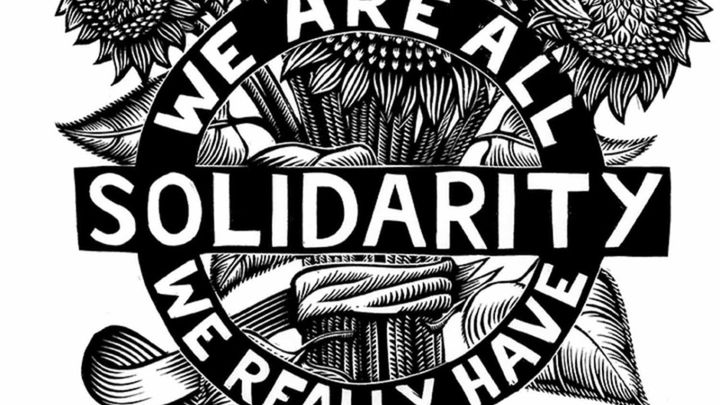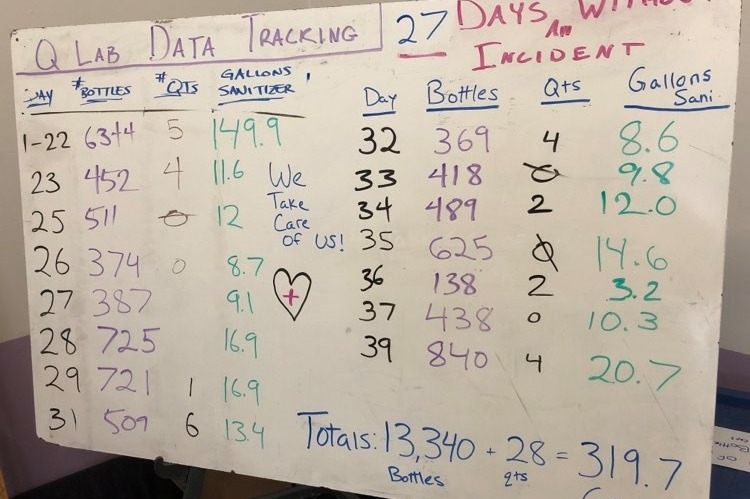
Help Medics Make & Give Out Hand Sanitizer
Medics from the Rosehip Medic Collective and Portland Action Medics have already distributed over 900 (UPDATE: 13,000!!!!) bottles of hand sanitizer to flatten the curve and save lives during the coronavirus pandemic.
They can buy the ingredients to make more, but they need money to do it!
Why hand sanitizer? Slowing the spread of coronavirus is the key to saving lives. Staying inside, washing your hands, and using hand sanitizer when you can't get to a sink are the best ways to flatten the curve and prevent our health care system from being overwhelmed. 
But what about all those folks who can't stay inside and wash their hands frequently because they don't have a house with running water? What about all the people in the service industry who still have to show up to work? What about all the folks doing mutual aid out in the community right now?
Most stores are still out of hand sanitizer but the ingredients are available in bulk, so your local street medics consulted a chemist as well as a local distillery making hand sanitizer and they are making it themselves! With the right ingredients and knowledgable people, it's not that hard to make effective, shelf-stable hand sanitizer from isopropyl alcohol, xanthan gum, and water. (The exact recipe and Rosehip's method is below.)
How you can help: Donate money!
The more hand sanitizer they can get out into the community in the next few weeks, the more lives will be saved.
Every $1.50 puts one bottle of hand sanitizer out into the community!
Success so far:
Update 4-23-2020
Hand Sanitizer Recipe (from Rosehip Medic Collective in Portland, Oregon)
Image, with written process description below that includes more options for different ingredient bases:
"We have produced over 8 gallons of hand sanitizer in the last 6 days and are on track to double that by the end of the week.
Please copy and share WIDELY, for cities who don't have these systems yet (I mean, share in Portland too, but it would be more useful to get this info to new areas)
The CDC says to use 2/3 91% or greater alcohol, and 1/3 aloe gel. The not-at-all funny part is that both of those items have gone out of supply long before most folks knew they needed to get on the ship. Also, we've had mixed luck with Aloe- some brands do okay, and some clump horribly.
We've learned to make it differently, using the World Health Organization website, in consultation with a chemist and then today we double-checked our method with the professional distiller at Shine who developed the method to use their "waste" alcohol- turns out we invented almost the exact same process she was using!!
(not all of our batches are made this way, as we've been using somewhat random collections of ingredients, but this is our primary recipe now and would be easiest and clearest to replicate)
Here's what we do:
Step 1-
2 cups WARM water
1 teaspoon xanthan gum
Mix with immersion blender (this is crucial, a hand whisk was NOT effective)
Step 2-
4 cups 91% or greater alcohol (this can be 91 or 99% rubbing alcohol, 95% everclear, 99% ethanol or IPA from a lab, or probably many other things, as long as it's over 91%)
Mix with immersion blender again, for a bit. A few goop bits may attach to the blender but can be ignored.
Step 3, OPTIONAL-
2 cups 70% rubbing alcohol
Mix with immersion blender.
(Note: do NOT replace 70% alcohol in this step with a higher percentage of alcohol. This step is only used to stretch the product further- if you have more 91% alcohol, make another batch with steps 1 and 2, your final product will be WAY more pleasant to use. Really, only do this step if you have additional lower-concentrate alcohol and are trying to maximize production with it.)
Final product, if 91% alcohol was used in step 2- 63% alcohol. A bit thin, but overall nice to use.
Final product, if 99% alcohol was used in step 2- 63.6% alcohol, thin like above.
Final product, if step 3 is omitted- I forgot the percent alcohol but definitely high enough to be effective (higher than 63%), AND, the consistency is better, making the product more pleasant to use.
Optional additive: Vegetable glycerin, 1 tablespoon (whether doing step 3 or not, this is the amount we've used even though the batch sizes differ). Glycerin makes the product softer and more pleasant to use. Too much makes it sticky and not evaporate off hands.
Modification:
This works ONLY IF your step 2 alcohol is 99%, this does NOT work if it's lower than that.
If you have 50% alcohol to add in step 3, AND your step 2 alcohol is 99%, you need to cut your water to 1.5 cups (we haven't made this recipe yet, will be trying it tomorrow- I would guess you'd still want 1 teaspoon of xantham though, that's how I intend to first make this tomorrow).
Cutting the water to 1.5 cups, using 4 cups 99% alcohol, and 2 cups of 50% alcohol, gives a final product of 61.5% alcohol- getting pretty close to the minimum 60%. (If you didn't drop the water amount and changed step 3 to 50%, your final product would be 57% alcohol- TOO LOW)."


